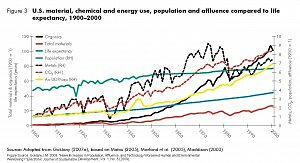Jerry Taylor and I published an op-ed criticizing the Cash for Clunkers program on Friday. We weren’t alone in our evaluation of the program.
Two interesting critical analyses of the Cash for Clunkers program were published over the weekend. The first by New York Times reporter Matt Wald examines the energy savings that would result from the program. If a clunker traveling 12,000 miles at 16 miles per gallon (consuming 750 gallons per year) were traded in for a new car getting 25 mpg while traveling the same distance (480 gallons a year), the the trade-in would save the driver 270 gallons per year. Multiply that by the roughly 245,000 vehicles that had been traded in under the program as of last Friday, before Congress extended the program, and you get 1.6 million barrels saved each year. That sounds great until you realize it’s only about two hours’ worth of our daily consumption, which is about 18.6 million barrels per day so far in 2009. But the savings is probably much less than that because old cars are not driven 12,000 miles per year.
The second critical analysis, examining the program’s effect on carbon emissions, appeared as a figure in the Outlook section of this weekend’s Washington Post. Over 10 years, the new cars will reduce emissions by 7 million metric tons, which is about 0.04% of the 16 billion metric tons that U.S. cars will produce over that time. That is, taxpayers will pay $147 per ton of CO2 reduction ($1.03 billion dollars divided by 7 million tons). In comparison, the economic literature estimates that the cost of the marginal damages of carbon emissions is between $15 and$50 per ton (see, e.g., this and this).
